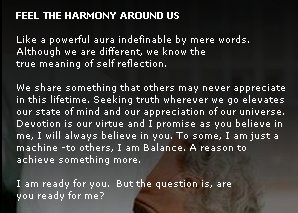Next week I’m giving a presentation in class on cosmetic surgery in regards to women of color. Now, cosmetic surgery does not readily fall under most common definitions of ‘violence,’ and I find myself hesitant to categorically label it as such.
On the one hand, while cosmetic surgery does involve bloody alterations on a person’s body, so does surgery in general, and we generally don’t label that as violent – especially when voluntarily consented to by the patient. The fact that cosmetic surgery is often (though not always) agreed to by an autonomous individual does mitigate the physical damage it brings.
Of course, we are all aware that ‘consent’ is a sticky issue, and that we can’t ignore the pressures that can constrain a person’s ability to make a choice – particularly in the case of women facing pressures to be ‘beautiful’ in a certain way.
Furthermore, the same level of physical damage can be construed as ‘violent’ or ‘non-violent’ depending on the context. Full-contact sports can be performed just as ferociously as a street brawl, yet not be uncontrolled and violent. What’s more, a session of safe, sane, and consensual BDSM can be non-violent, while the quietest rape perpetrated under clearly communicated threat is clearly not.
Still, I find it difficult to attach the label of ‘violent’ to cosmetic surgery in its entirety. There is still a risk of compromising the agency of the woman who elects to have that surgery. This risk is exacerbated by the fact that ‘cosmetic surgery’ is a difficult category for me to define, because its borders blur with what is considered ‘reconstructive surgery,’ as well as decorative body modifications.
So all I have right now are the beginnings of an analysis of the level of violence within cosmetic surgery. One of the most important pieces that I have so far comes out of my study of women of color. While researching for my presentation, I ran across a book by Margaret L. Hunter called Race, Gender, and the Politics of Skin Tone. While her object of analysis is colorism, or racial prejudice based on skin color, she examines the connection between the creation of beauty standards and the exploitation of women of color’s bodies in a way that I find useful for contextualizing cosmetic surgery.
Consider this passage on the construction of blackness:
“African-ness” came to be known as evil and “whiteness” came to be known as virtuous. These abstract concepts, however, quickly manifest themselves in the actual phenotypic characteristics of the racial groups […] Blackness and whiteness were no longer merely abstract concepts. Actual physical traits associated with each racial group began to take on these ideological meanings. Dark brown skin, kinky hair, and broad noses started to represent barbarism and ugliness. Similarly, straight blonde hair and white skin began to represent civility and beauty. (Hunter 20-1)
For women of color, this racist pressure is combined with a sexist one: for instance, Latina women are faced with the history of imagery that constructed dark-skinned Mexican American women as not only inferior, but as whores, while light-skinned and therefore favored women were tied to the Madonna (Hunter 31). Thus even the light-skinned and white women who are seen as ‘good’ are subjected to the same overarching system that judges and degrades women based on their physical appearance. Or, as Hunter puts it, “The racist action of the beauty queue seems obvious, but the fact that there is a queue at all is the less obvious but equally damaging effect. So the beauty queue is racist in its hierarchy of women by color and misogynist in its function to objectify all women” (28).
Physicality, and physical beauty, are not just about the body, but are intimately tied with ideas of social and sexual worth. This is, of course, true for more people than just women of color – women of all races are judged on how attractive they are to heterosexual men, people with disabilities are judged as less intelligent or capable or worthwhile than able-bodied people.
From value judgments, it is a frighteningly easy transition to actual violence. Consider the dark-skinned Latina ‘whore’ who is denied the sexual innocence of the ‘Madonna.’ When such a woman is raped, her violation is minimized in the same way that all violations of the sexually deviant are minimized – with excuses that she was ‘asking for it,’ or that it doesn’t matter because she’s already ‘used.’ How many other racialized constructions can we think of that justify sexual violence based on a woman’s appearance as non-white – the oversexed Black woman, the Oriental geisha girl, the Indian squaw?
And now we can change some of those features that identify us as ethnic minority women. Eyelid surgeries add creases to Asian people’s eyelids, making them look more similar to white people. Rhinoplasty is used to alter the noses of members of various races, bringing them more in line with the longer and narrower Anglo nose (Hunter 56).
Are women of color who choose such surgeries aware of the violence that has historically plagued women who look different from the (white) standard? Certainly not all of them are. But can we honestly say that such women are completely unaffected by the continuing judgments leveled upon the worth of women of color, which are based in such a history?
So what Hunter provides for me is the possibility that the violence of cosmetic surgery lies not in the practice itself, but in the history that shapes the parameters of that practice: what is performed, why it is performed, and how women are pressured into participating in this practice.
This conclusion, half-formed as it is, still leaves open the question of whether or not cosmetic surgery is violent in and of itself, or whether it is just surrounded by violence. I’m still working that one out.


